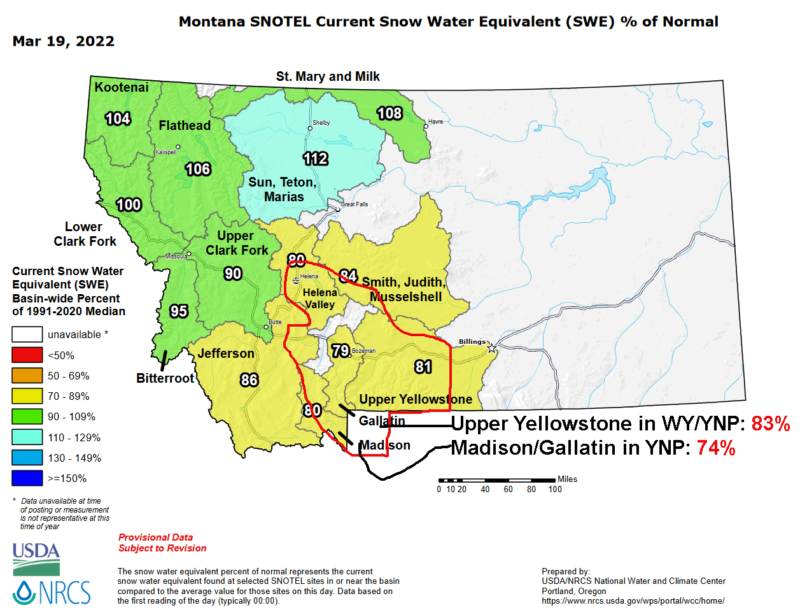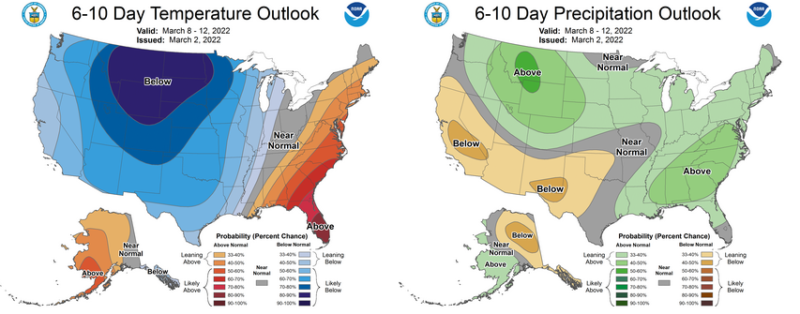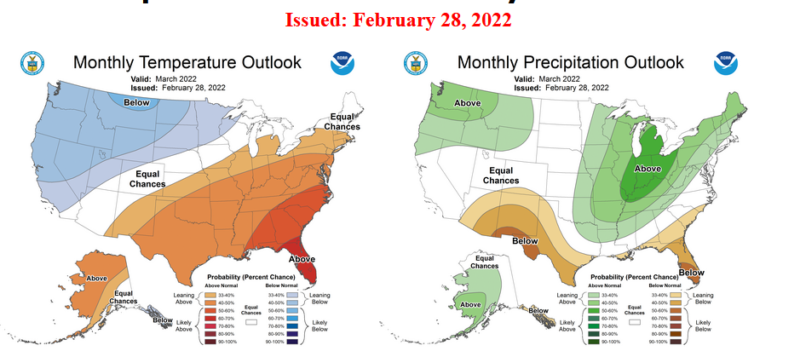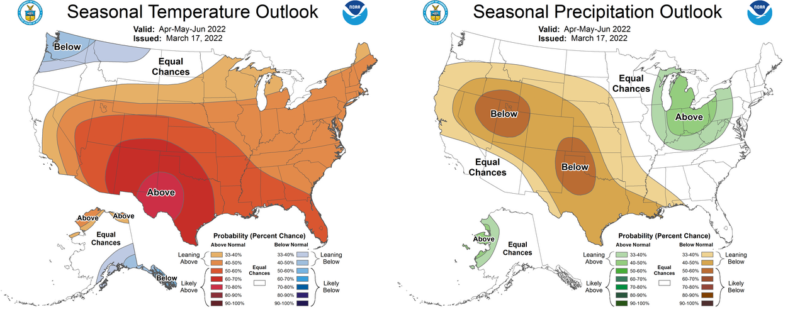Brief Update on Late-Summer Conditions and Guided Trip Availability
Posted on March 30th, 2022
Our next full update on snowpack and current summer water conditions should drop on Friday. That said, recent continued degradation to our already scant snowpack means that we are now certain to experience extreme drought conditions in late summer. Record low flows and the worst late-summer fishing conditions since 1988 are now likely.
As such, we now actively DISCOURAGE potential clients from planning fishing trips to Montana from August 1 through August 20. We are likely to face broad and extreme fishing restrictions to protect trout at this time, possibly including full fishing closures in Yellowstone Park and on most or all large rivers outside it. 2:00 closures on all major trout waters are now almost certain.
For clients who are planning general family vacations and still want to get a day of guided fishing in, we will accept August bookings only on a “guide’s choice” basis as far as trip type, duration, and target species. We heartily encourage arranging “peak season” travel to fish in June and the first three weeks of July or after September 15.
Mid-March Snowpack Update and Season Fishing Forecast
Posted on March 19th, 2022
Introduction, Current Conditions, and Long-Range Outlooks
Here in Yellowstone Country, winter snowpack and how this snowpack melts from late April through June play the most important roles in summer water supply for both fish and agriculture from early June through mid-September. June through mid-September temperatures and rainfall play a secondary role. Only after mid-September does day-to-day weather play the largest role in overall water levels and water quality. Winter weather is thus very helpful in planning summer fishing trips to the region.
On the heels of low snowpack in 2020-2021 followed by a record warm, dry summer that came early, we are currently in severe to extreme drought throughout the YCFF operations area. Montana is in worse shape as far as drought than any other regions in the West except for Oregon east of the Cascade Range and the state of Nevada. Unfortunately, current snowpack is very low, so these conditions are not likely to improve much. Current snowpack ranges from 74% to 86% of normal for the date in our ops area, with the two most important basins (the Yellowstone River basins in Wyoming/YNP and Montana) at 83% and 81% of normal, respectively.

The culprit for the above low snowpack is simple: we had very little fall and early winter snow, lots of snow from about December 10 through New Year, almost none in January and most of February, and a little since. January and February snowfall were record-low in many areas throughout the region. The following graphic is from the Two Ocean Plateau Snotel, a high-elevation snow data sensor at 9240 feet near Yellowstone Park’s southern boundary, in the Wyoming portion of the Upper Yellowstone basin. Notice the flatline. That’s this year’s water. The smooth green line is mean snowpack for the date. The jerky green line is median snowpack for the date.
Unfortunately, the 6–10 and 8–14 day outlooks, the monthly outlook for March, and the 3-month outlook for April through June do not look promising for much improvement in the above numbers. The 8–14 day and three-month outlooks (the latter covers the entire spring runoff season) are provided below.
Summary of Anticipated Water & Fishing Conditions
In a general sense, here’s what we expect for June through mid-September streamflow and fishing conditions. This is based on current conditions and the longer-range outlooks. Think of the following as something like a weather forecast from a week out: it’s too early for specifics, but the general outline is probably accurate. Spring fishing conditions depend on day-to-day weather; we hope for a late and slow start to the spring snowmelt.
- The fishing and guiding seasons have already begun. Now (mid-March) through mid-April will probably offer the most consistent float-fishing of the entire season, with the exception of about a month in June-July.
- Below-normal snowpack and resulting summer streamflows are now certain. How low we go depends on how much moisture we get through mid-May and how the snow melts from late April onward. Record-low water in late summer is very possible.
- We anticipate a light snowmelt and an early end to the snowmelt cycle. The end point will depend on when the snow starts melting in earnest.
- Late June and July fishing conditions will be better than August and early September conditions.
- The fish are likely to be spooky and difficult for much of the season.
- 2:00PM fishing closures will be common to universal across our operations area between July 25 and August 25. Closures outside of these timeframes are possible if we have an early extreme warmup as we did in 2021.
- Complete fishing closures are possible on many waters in August if we have a repeat of last summer’s record heat and drought. This could include total fishing closures in Yellowstone Park. These are much less likely in Montana.
- Fires and smoke from both local and distant fires are likely to be very bad this year beginning in mid-July.
- Due to the winding-down of COVID (we hope) prompting high tourism, as well as the rapidly increasing population in the region, fishing pressure will be intense from the end of runoff through early October, assuming fires and stream closures allow for it. The quality of the fishing will not play any role in how many people are on the water. We are already seeing much more fishing pressure than is typical for season, including record-high bookings for March.
Detailed Fishing Conditions by Water
The following information is still quite general, as we still don’t know exactly how much snow we will get or when and how this snow will melt. In general, more snow and a later melt will push things towards the latter end of the following date ranges, increase overall summer streamflows, improve the fishing in late July and August, and reduce fishing quality in June, while little moisture for the remainder of winter and early spring and an early start to the melt will have opposite effects.
Fishing beginning in early-mid September depends more on day-to-day weather than snowmelt. In general, the fishing AFTER September 15 will probably be better than the fishing BEFORE unless we see unusual weather. We DID see unusual weather in 2021; early September was cool and wet while late September was warm and bright, so fishing was much better in early September last year. This was very odd.
Montana Fisheries
- Yellowstone River: Runoff will end between June 10 and June 20. The fishing will be best for the month following. Hot, bright days in August and early September will be very difficult, particularly in shallow, gentle sections of river. 2:00PM fishing closures are very likely on the entire Yellowstone River from YNP to Laurel from sometime in late July until sometime in late August unless we are blessed with a late runoff and a cool, wet June.
- Madison River: The Lower Madison will not experience any appreciable runoff and will be best prior to June 10. After June 15 it may be too warm after noon depending on day-to-day weather. The Upper Madison (really outside my ops area) will likewise probably not experience much of a runoff. It will be best from mid-June through mid-July.
- Boulder River: Runoff will end between June 10 and June 20, with June 15 most likely. The river is likely to get too low to float around July 10, and perhaps sooner. High water temps and low flows will almost certainly be a problem even for wade-fishing in August due to this small river’s intense irrigation drawdowns.
- Stillwater River: Runoff will end between June 10 and June 25, with June 15-20 most likely. Upper sections will be too low to float around July 10-15. Lower portions downstream of the Rosebud confluence will be high enough to float through late August. The best fishing will occur in July.
- Missouri River: No appreciable runoff will occur. It’s actually pretty unlikely flows from Holter Dam will change much at all from the current 3000-odd CFS levels this spring. The carp/walleye/pike water upstream from Canyon Ferry Reservoir will as always fish best from late July through early September. The trout water downstream of Canyon Ferry (including “Land of Giants”) will fish best from now through June.
- Private Lakes: Day-to-day weather is more imporant on the lakes than snowmelt. These lakes should fish well from early April through at least mid-June, with hot/bright weather thereafter the determining factor on when things get slow.
- Paradise Valley Spring Creeks: Fishing is always best on the creeks from early March through April, then again from about June 20 through July 20. Unfortunately, radically-increasing pressure on the creeks now means that many prime dates in June-July 2023 are now booked solid. We’re basically done guiding on these creeks except in March-April because of this.
- Other Waters: The Gallatin River will likely drop out of runoff in mid-June and possibly get too warm by late July. The Jefferson River will drop from runoff by mid-June and probably be too warm the instant it does. Immense fish kills occurred on this river in 2021 and this year will be no better. Many portions may honestly never recover, given the likely future flows and water temps current climate models predict. Montana small streams will generally fish best in July but will also be okay in August provided they don’t get TOO skinny. Public lakes in Montana will be best in May and June.
Yellowstone Park Fisheries
- Yellowstone River: The Lake-Falls stretch always opens July 15. It will be best for the two weeks thereafter. The Grand Canyon from the Falls to the Lamar confluence is unlikely to experience an unfishably-high runoff. It should fish well with nymphs and streamers as soon as it opens on the Saturday of Memorial Day Weekend, though it won’t necessarily be “pretty.” 2:00 closures are likely in August, though only because YNP tends to use a hammer as its only tool in fisheries management–in reality, this section of the Yellowstone stays under 70 degrees and is deep enough to offer good cover even in awful drought years. The Black Canyon section downstream of the Lamar confluence tracks similarly to the Yellowstone River outside the park.
- Gardner River: The Gardner will be fishable on a day-to-day basis from the park opener through mid-June, then be good through early July throughout and after early July only upstream from Boiling River. Downstream of Boiling River will be too warm until mid-September. Note that the Gardner saw overwhelming pressure in 2021 and generally fished poorly because of it.
- Lamar River & Tributaries: Runoff will end between June 15 and July 1 on Slough Creek and between June 20 and July 4 elsewhere. The best fishing will be for the month thereafter. Late August and early September will see low water and spooky fish, particularly on Slough Creek. Roadside areas saw overwhelming pressure in 2021 and 2022 might well be worse.
- Firehole River: The Firehole will not experience an appreciable runoff and will fish best between the park opener and June 10. The first hot/dry spell between June 10 and June 20 will shut down fishing until after Labor Day. We did not guide on the Firehole in 2021 and almost certainly will not in 2022, either. If current climate models continue, the Firehole will cease to be a relevant fishery downstream of Old Faithful by 2030 due to repeated fish kills associated with high water temperatures.
- Gibbon River: The Gibbon is unlikely to experience an appreciable runoff and will be best between June 1 and June 15. After June 15, the first hot spell will shut the fishing off until September 1.
- Upper Madison River: Generally similar to the Firehole but will hang on for a few days after the first hot spell.
- Lakes in YNP: Ice-out will depend on day-to-day weather but should occur around Opening Day. All should be accessible from this point onward due to limited snow on the trails. All will fish best from ice-out (or Opening Day, whichever comes second) through June, then trail off through July.
- Creeks in YNP: Meadow-type streams will become fishable between June 5 and June 25, with those draining lakes becoming fishable towards the earlier end and those draining mountains falling into shape later. All will be best for the first month after they come in. Rough, mountain creeks will come into shape between June 15 and July 4 and be best for a month starting about a week after they fall into shape.
Snowpack Report and Summer Streamflow and Fishing Outlook: Early March Update
Posted on March 3rd, 2022
Introduction, Current Conditions, and Long-Range Outlooks
Here in Yellowstone Country, winter snowpack and how this snowpack melts from late April through June play the most important roles in summer water supply for both fish and agriculture from early June through mid-September. June through mid-September temperatures and rainfall play a secondary role. Only after mid-September does day-to-day weather play the largest role in overall water levels and water quality. Winter weather is thus very helpful in planning summer fishing trips to the region.
On the heels of low snowpack in 2020-2021 followed by a record warm, dry summer that came early, we are currently in severe to extreme drought throughout the YCFF operations area. Montana is in worse shape as far as drought than any other region in the West except for Oregon east of the Cascade Range. Unfortunately, current snowpack is very low, so these conditions are not likely to improve much. Current snowpack ranges from 77% to 85% of normal for the date in our ops area, with the two most important basins (the Yellowstone River basins in Wyoming and Montana) at 85% and 81% of normal, respectively.

Montana snowpack as of March 3, 2022. Our operations area is circled in red.
The culprit for the above low snowpack is simple: we had very little fall and early winter snow, lots of snow from about December 10 through New Year, and almost none since. January and February snowfall were record-low in many areas throughout the region. The following graphic is from the Two Ocean Plateau Snotel, a high-elevation snow data sensor at 9240 feet near Yellowstone Park’s southern boundary, in the Wyoming portion of the Upper Yellowstone basin. Notice the flatline. That’s this year’s water. The smooth green line is mean snowpack for the date. The jerky green line is median snowpack for the date.
The past week has been awful for snowpack, with temperatures reaching into the 40s even in the mountains and touching the mid-50s at valley level. Low-elevation snow is almost gone. Things do look to improve between now and mid-March, however. Cold, wet weather is in the forecast more or less as far as the eye can see. We hope it materializes. Such outlooks have been present throughout most of the winter but have rarely come to pass. The following graphics show the composite temperature and precip outlooks for the 6–10 day period and through March. This information is at NOAA’s Climate Prediction Center.


Summary of Anticipated Water & Fishing Conditions
In a general sense, here’s what we expect for June through mid-September streamflow and fishing conditions. This is based on current conditions and the longer-range outlooks. Think of the following as something like a weather forecast from a week out: it’s too early for specifics, but the general outline is probably accurate. Spring fishing conditions depend on day-to-day weather; we hope for a late and slow start to the spring snowmelt.
- Below-normal snowpack and resulting summer streamflows are now basically certain. How low we go depends on how much moisture we get through mid-May and how the snow melts from late April onward. Record-low water in late summer is very possible.
- We anticipate a light snowmelt and an early end to the snowmelt cycle. The end point will depend on when the snow starts melting in earnest.
- Late June and July fishing conditions will generally be better than August and early September conditions.
- The fish are likely to be spooky and difficult for much of the season.
- If we have a hot/dry summer, 2:00PM fishing closures will be common to universal across our operations area between July 25 and August 25. Closures outside of these timeframes are possible if we have an early extreme warmup as we did in 2021.
- Fires and smoke from both local and distant fires are likely to be very bad this year beginning in mid-July.
- Due to the winding-down of COVID (we hope) prompting high tourism, as well as the rapidly increasing population in the region, fishing pressure will be intense from the end of runoff through early October, assuming fires and stream closures allow for it. The quality of the fishing will not play any role in how many people are on the water.
Detailed Fishing Conditions by Water
The following information is still quite general, as we still don’t know exactly how much snow we will get or when and how this snow will melt. In general, more snow and a later melt will push things towards the latter end of the following date ranges, increase overall summer streamflows, improve the fishing in late July and August, and reduce fishing quality in June, while little moisture for the remainder of winter and early spring and an early start to the melt will have opposite effects.
Fishing beginning in early-mid September depends more on day-to-day weather than snowmelt. In general, the fishing AFTER September 15 will probably be better than the fishing BEFORE unless we see unusual weather. We DID see unusual weather in 2021; early September was cool and wet while late September was warm and bright, so fishing was much better in early September last year. This was very odd.
Montana Fisheries
- Yellowstone River: Runoff will end between June 5 and June 25, with June 15-20 now most likely. The fishing will be best for the month to six weeks after runoff starts to trail off. Hot, bright days in August and early September will be very difficult, particularly in shallow, gentle sections of river.
- Madison River: The Lower Madison will not experience any appreciable runoff and will be best prior to June 15. After June 20 it may be too warm after noon depending on day-to-day weather. The Upper Madison (really outside my ops area) will likewise probably not experience much of a runoff. It will be best from mid-June through mid-July.
- Boulder River: Runoff will end between June 1 and June 20, with June 15 most likely. The river is likely to get too low to float no later than July 15, and perhaps sooner. High water temps and low flows will almost certainly be a problem even for wade-fishing in August due to this small river’s intense irrigation drawdowns.
- Stillwater River: Runoff will end between June 1 and June 25, with June 15-20 most likely. Upper sections will be too low to float around July 10-15. Lower portions downstream of the Rosebud confluence will be high enough to float through late August. The best fishing will occur in July.
- Missouri River: No appreciable runoff will occur. It’s actually pretty unlikely flows from Holter Dam will change much at all from the current 3000-odd CFS levels this spring. The carp/walleye/pike water upstream from Canyon Ferry Reservoir will as always fish best from late July through early September. The trout water downstream of Canyon Ferry (including “Land of Giants”) will fish best from now through June.
- Private Lakes: Day-to-day weather is more imporant on the lakes than snowmelt. These lakes should fish well from early April through at least mid-June, with hot/bright weather thereafter the determining factor on when things get slow.
- Paradise Valley Spring Creeks: Fishing is always best on the creeks from early March through April, then again from about June 20 through July 20. Unfortunately, radically-increasing pressure on the creeks now means that many prime dates in June-July 2023 are now booked solid. We’re basically done guiding on these creeks except in March-April because of this.
- Other Waters: The Gallatin River will likely drop out of runoff in mid-June and possibly get too warm by late July. The Jefferson River will drop from runoff by mid-June and probably be too warm the instant it does. Immense fish kills occurred on this river in 2021 and this year will be no better. Many portions may honestly never recover, given the likely future flows and water temps current climate models predict. Montana small streams will generally fish best in July but will also be okay in August provided they don’t get TOO skinny. Public lakes in Montana will be best in May and June.
Yellowstone Park Fisheries
- Yellowstone River: The Lake-Falls stretch always opens July 15. It will be best for the two weeks thereafter. The Grand Canyon from the Falls to the Lamar confluence may not experience an unfishable runoff. If it does become too high, it will clear no later than June 10-15. It will be best in late June and July but should produce for the remainder of the season if it does not get too warm. The Black Canyon section downstream of the Lamar confluence tracks similarly to the Yellowstone River outside the park.
- Gardner River: The Gardner will be fishable on a day-to-day basis from the park opener through mid-June, then be good through early July throughout and after early July only upstream from Boiling River. Downstream of Boiling River will be too warm until mid-September. Note that the Gardner saw overwhelming pressure in 2021 and generally fished poorly because of it.
- Lamar River & Tributaries: Runoff will end between June 15 and July 1 on Slough Creek and between June 20 and July 4 elsewhere. The best fishing will be for the month thereafter. Late August and early September will see low water and spooky fish, particularly on Slough Creek. Roadside areas saw overwhelming pressure in 2021 and 2022 might well be worse.
- Firehole River: The Firehole will not experience an appreciable runoff and will fish best between the park opener and June 10. The first hot/dry spell between June 10 and June 25 will shut down fishing until after Labor Day.
- Gibbon River: The Gibbon is unlikely to experience an appreciable runoff and will be best between June 1 and June 15. After June 15, the first hot spell will shut the fishing off until September 1.
- Upper Madison River: Generally similar to the Firehole but will hang on for a few days after the first hot spell.
- Lakes in YNP: Ice-out will depend on day-to-day weather but should occur around Opening Day. All should be accessible from this point onward due to limited snow on the trails. All will fish best from ice-out (or Opening Day, whichever comes second) through June, then trail off through July.
- Creeks in YNP: Meadow-type streams will become fishable between June 5 and June 25, with those draining lakes becoming fishable towards the earlier end and those draining mountains falling into shape later. All will be best for the first month after they come in. Rough, mountain creeks will come into shape between June 15 and July 4 and be best for a month starting about a week after they fall into shape.
